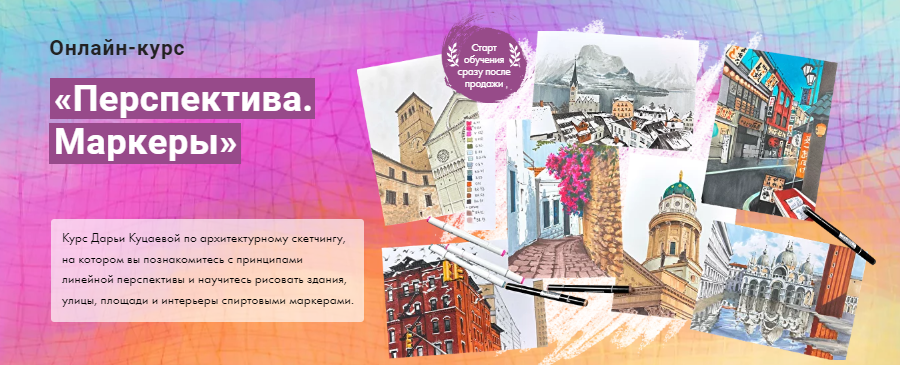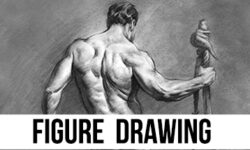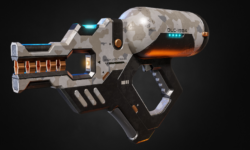Perspective & Markers by Daria Kutsaeva (Перспектива. Маркеры – Russian, Eng sub)
Release date:2023
Duration:16 h 26 m
Author:Daria Kutsaeva
Skill level:Beginner
Language:Russian
Exercise files:Yes
Perspective is a technique used in art to create the illusion of depth and three-dimensionality on a two-dimensional surface. It plays a crucial role in representing space and creating realistic and convincing images. The history of perspective can be traced back to ancient civilizations, but it became a systematic and widely adopted technique during the Renaissance period in Europe.
Theoretical Lesson: Types of Perspective Used by Artists of the Past
- Linear Perspective: Linear perspective is the most fundamental and widely used type of perspective in art. It is based on the principle that parallel lines appear to converge at a single point on the horizon line, called the vanishing point. This technique creates the illusion of depth and distance in a two-dimensional artwork. Linear perspective can be further classified into one-point perspective, two-point perspective, and three-point perspective, depending on the number of vanishing points used.
- One-Point Perspective: In one-point perspective, all parallel lines recede into a single vanishing point on the horizon line. It is often used when depicting scenes viewed directly from the front or when the viewer’s line of sight is perpendicular to the picture plane.
- Two-Point Perspective: Two-point perspective involves two vanishing points on the horizon line, creating the illusion of depth in an image. It is commonly used to depict objects or scenes viewed from an angle, such as a corner of a building or a street receding into the distance.
- Three-Point Perspective: Three-point perspective is used when portraying objects or scenes from extreme angles, such as looking up at a skyscraper or down into a deep canyon. It includes three vanishing points: two on the horizon line and one above or below it.
- Atmospheric Perspective: Also known as aerial perspective, this technique focuses on the way objects appear to change as they recede into the distance due to atmospheric effects. In atmospheric perspective, objects become less distinct, colors become lighter and more muted, and contrast decreases as the distance increases. This technique helps create a sense of depth and spatial recession in a painting.
- Isometric Perspective: Isometric perspective is a method used to depict objects in a way that eliminates the effects of distance and foreshortening. In isometric perspective, all parallel lines remain parallel, and there are no vanishing points. This technique is often used in technical drawings, architectural illustrations, and video games to show objects in a clear and consistent manner.
- Reverse Perspective: Reverse perspective is a technique where the lines of perspective do not converge at a vanishing point but instead diverge outward. This creates a unique visual effect where objects appear to push out from the picture plane rather than receding into space. Reverse perspective was used in Byzantine and Russian icon painting as a way to emphasize the spiritual significance of the depicted figures.
These are just a few examples of the types of perspective used by artists of the past. Understanding these techniques and their applications can greatly enhance an artist’s ability to create realistic and compelling artworks.





 Channel
Channel





